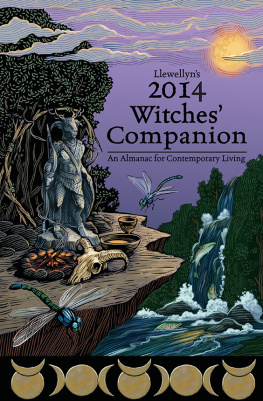
THE LONDON UNDERGROUND ELECTRIC TRAIN
Piers Connor

THE CROWOOD PRESS
First published in 2015 by
The Crowood Press Ltd
Ramsbury, Marlborough
Wiltshire SN8 2HR
www.crowood.com
Piers Connor 2015
All rights reserved. No part of this publication may be reproduced or transmitted in any form or by any means, electronic or mechanical, including photocopy, recording, or any information storage and retrieval system, without permission in writing from the publishers.
British Library Cataloguing-in-Publication Data
A catalogue record for this book is available from the British Library.
ISBN 978 1 78500 014 0
Unless otherwise credited, all illustrations are from the authors collection.
CONTENTS
LIST OF ABBREVIATIONS
ATO (Automatic Train Operation).
ATP (Automatic Train Protection).
BTH (British ThomsonHouston) The British arm of the American General Electric Company (GE, q.v.) that supplied the bulk of the Undergrounds electric traction equipment until the 1980s.
BW (British Westinghouse Electric & Manufacturing Company) A company set up in 1899 to sell Westinghouse electrical products in Britain. Later became Metropolitan Vickers (q.v.).
C&SLR (City & South London Railway) The company that owned the first electrically operated tube railway in London, which eventually ran from Clapham Common to Euston via the City. It is now the City branch of the Northern line.
CLR (Central London Railway) The company set up to construct and run the tube railway between Shepherds Bush and Bank. It became part of the Underground Group.
CSDE (Correct-Side Door Enable).
CTBC (Combined Traction/Brake Controller).
ECEB (Electrical Control of Emergency Braking) Introduced for the 1973 Tube Stock to replace the Westinghouse brake as the on-board safety brake system.
EMI (Electro-Magnetic Interference).
FACT (Fully Automatic Control of Trains).
GE (General Electric) The American company originally founded by Thomas Edison that was formed when Edisons company was absorbed by the ThomsonHouston company.
GEC (General Electric Company) The UK company founded in 1886 that only first supplied the Underground with electric traction equipment in 1923.
GNPB (Great Northern, Piccadilly & Brompton Railway) The official company title of the Piccadilly Line in its early days.
GTO (Gate Turn Off) (thyristor) A type of electronic switch used in 1990s traction power circuits to vary power in DC motor control.
HSCB (High-Speed Circuit Breaker).
IGBT (Insulated Gate Bipolar Transistor) Now a common component in electric traction power circuits. Replaced GTOs.
LER (London Electric Railway) A company formed in 1910 by amalgamation of the Baker Street & Waterloo Railway (the Bakerloo Line), the Charing Cross, Euston & Hampstead Railway (the Hampstead line) and the Great Northern, Piccadilly & Brompton Railway (the Piccadilly Line).
LNWR (London & North Western Railway) The name of the company that owned (amongst other routes) the West Coast main-line route from London Euston to Watford, Birmingham and northwards to Carlisle.
LU (London Underground).
MAR (Motor Alternator Rectifier).
MG (Motor Generator).
MU (Multiple Unit) System for controlling distributed power and other equipment on a passenger train from one driving position.
MV (MetropolitanVickers) A company formed from the original British Westinghouse company and Vickers that supplied electrical equipment to the Underground.
NTfL (New Tube for London) The design proposals for new tube rolling stock published in October 2014.
OMO (One-Man Operation) Used until replaced by the more politically correct OPO.
OPO (One-Person Operation).
PCM (Pneumatic Camshaft Mechanism).
PDC (Passenger Door Control)
PEA (Passenger Emergency Alarm).
PEAB (Passenger Emergency Alarm Brake).
psi (Pounds Per Square Inch) A measure of pressure. 14.5psi = 1 bar.
PWM (Pulse Width Modulation).
RTT (Round-The-Train circuits).
SAPB (Spring Applied Parking Brake) Automatic parking brake used on Underground trains built from the late 1970s.
SCAT (Speed Control After Tripping).
SDO (Selective Door Operation).
UERL (Underground Electric Railways of London Ltd) The holding company set up in 1902 to finance the electrification of the District Railway and manage the completion of the tube railways then under construction. It became known as the Underground Group and it later absorbed some London bus and tram operations.
W&C (Waterloo & City Railway) The tube line built by the London & South Western Railway in 1898 between Waterloo and Bank and taken over by the Underground in 1994.
WJS (Watford Joint Stock) A tube stock fleet partially owned by the LNWR and partly by the LER. It was built in 1920 to work the Bakerloo service to Watford over the New Lines built adjacent to the LNWR main line out of Euston.
PREFACE
The century and a half that has passed since the first Underground line in London opened in 1863 has seen huge advances in technology. The greatest of these has been the development of electric traction, which started 125 years ago in London with the opening of the City & South London Railway (C&SLR) in 1890.
This book tells the story of the advances in engineering and operations, many originally developed by American engineer Frank J. Sprague and his successors, that have pushed forward the development of the Undergrounds electric trains. It shows how the trains we see today have been designed with a background of 125 years of experience and development since the opening of the C&SLR. In the book are the stories behind the various systems in use now and the reasons for the introduction of the operational, engineering and safety devices provided on trains.
This book is not a history of the rolling stock itself; rather the story of its development. Each chapter contains a bit of background, a bit of science, a bit of history and a bit of practical experience, with many illustrations showing how the basics were developed and what trains looked like through the years of their development.
Much of the information in this book is from official sources and company records, gathered over the last fifty years. During this time, I have had help from many colleagues and friends like Brian Hardy, Graham Neil, Mike Horne, Felix Schmid, Julian Galeswki, Richard Griffin, Andy Barr, Steve Smith, Ted Robinson, John Sprague, Tim OToole and some who, sadly, have passed, like Gordon Hafter, J. Graeme Bruce, Cyril Birkbeck, Bob Greenaway and Ernest Lumley. My thanks to those who have helped with the provision of photos and illustrations and drawings; they are acknowledged with each figure. To all these and many others I have known over the years, my thanks for their help and support, given both knowingly and unknowingly.
Piers Connor
CHAPTER ONE
HERITAGE
THE LONDON UNDERGROUND
The London Underground, known as The Tube, is the oldest of the worlds many urban rapid transit systems, the first section opening on 10 January 1863. Its wonderful heritage was celebrated in style for its 150-year anniversary in 2013, including a visit by Her Majesty The Queen and members of the Royal Family and a re-enactment of steam operation between Edgware Road and Moorgate over part of the original route. The Underground now has eleven lines and serves 270 stations, which provide services for up to twenty hours a day. The system is operated by TfL (Transport for London), which is also responsible for the provision of some main line rail services (the Overground), London area bus service franchising and surface transport facilities in the greater London area, amongst other things.
Next page
















